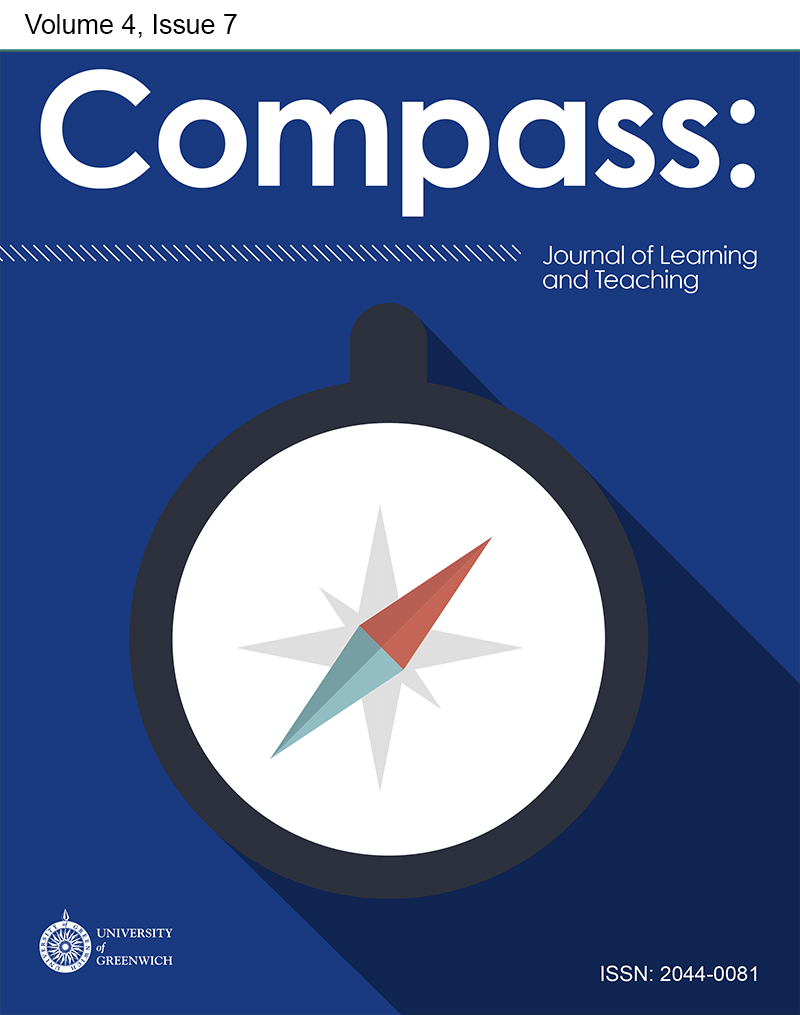Increasing the interaction time in a lecture by integrating flipped classroom and just-in-time teaching concepts
DOI:
https://doi.org/10.21100/compass.v4i7.84Abstract
Limited contact time in the traditional lecture structure poses a challenge for the lecturer to select the depth of material covered in the lecture while ensuring complete coverage of the syllabus. In the case of large groups, this also restricts the time that can be dedicated for enquiry based learning and active engagement with the students. This lack of enquiry based learning is cited as one of the main disadvantages of traditional lectures as a teaching strategy (Cashin 1985). Furthermore, due to the diverse learning abilities of the students some concepts are very basic for a subset of the class and they lose their focus if they feel that trivial points are being discussed in a session.
References
Cousin, G. (2008). Researching Learning in Higher Education, New York: Routledge.
Hake, R.R. (1998). 'Interactive-engagement vs. traditional methods: A six-thousand-student survey of mechanics test data for introductory physics courses', American Journal of Physics, 66(1), 64-74.
Healey, M. and Jenkins, A. (2009), Developing undergraduate research and inquiry, York: Higher Education Academy.
Kirschner, P.A.; Sweller, J. and Clark, R.E. (2006). 'Why Minimal Guidance During Instruction Does Not Work: An Analysis of the Failure of Constructivist,Discovery, Problem-Based, Experiential, and Inquiry-Based Teaching', Educational Psychologist, 41(2), 75-86.
Laws, P. (1991). 'Calculus-based Physics withour Lectures', Physics Today, 44(12), 24-31.
Mazur, E. (1996). Peer Instruction: A User's Manual, Upper Saddle River, NJ, USA: Prentice Hall.
McDermott, L. (1991) 'Millikan Lecture 1990: What we teach and what is learned - Closing the gap', American Journal of Physics, 59(4), 301-315.
Novak, G.M.; Patterson, E.T.; Garvin, A.D. and Christian, W. (1999) Just-in-time Teaching, New Jersey, USA: Prentice Hall.
Simkins, S. and Maier, M.H. (eds.) (2010) Just-in-time Teaching - Across the discipline, across the academy, Sterling VA, USA: Stylus Publishing LLC.
Sutherland, T.E. and Bonwell, C.C. (eds.) (1996). Using active learning in college classes: a range of options for faculty, San Francisco, USA: Jossey-Bass.
Bergmann, J. and Sams, A. (2012), Flip Your Classroom: Reach Every Student in Every Class Every Day, USA: ISTE and ASCD.
Downloads
Published
How to Cite
Issue
Section
License
Compass: Journal of Learning & Teaching provides immediate open access to its content on the principle that making research freely available to the public supports a more equitable global exchange of knowledge.
Works are released under the default licence of Creative Commons Attribution 4.0 International (CC BY), which provides unrestricted use, distribution, and reproduction in any medium, provided the original work is properly cited. If authors require a divergent licence, please contact the Scholarly Communications Manager at scholarlycommunications@greenwich.ac.uk.
Authors of articles published in Compass: Journal of Learning & Teaching remain the copyright holders to their published work and grant third parties the right to use, reproduce, and share the article according to terms of the Creative Commons license agreement applied to the work by Compass: Journal of Learning & Teaching.
Self-archiving policy: authors are permitted, and encouraged, to deposit any version of their article - submitted, accepted, and published versions - in subject and institutional repositories at any time.
If you have any queries about the choice of license, or which to discuss other options, please contact the Scholarly Communications Manager at scholarlycommunications@greenwich.ac.uk.



